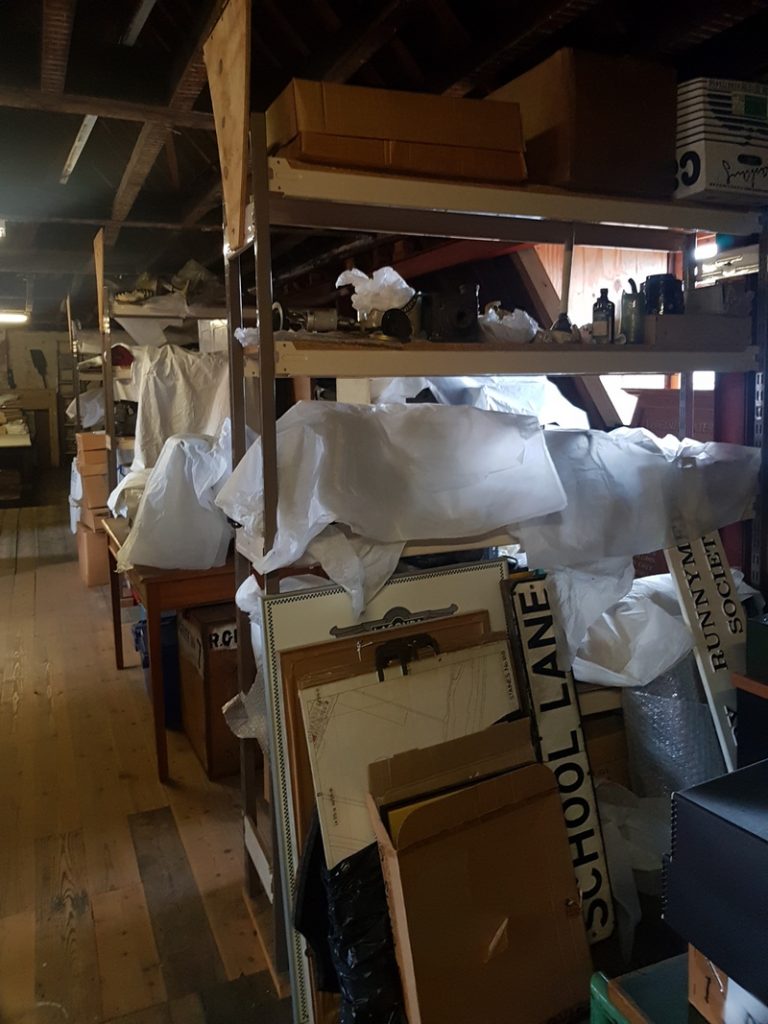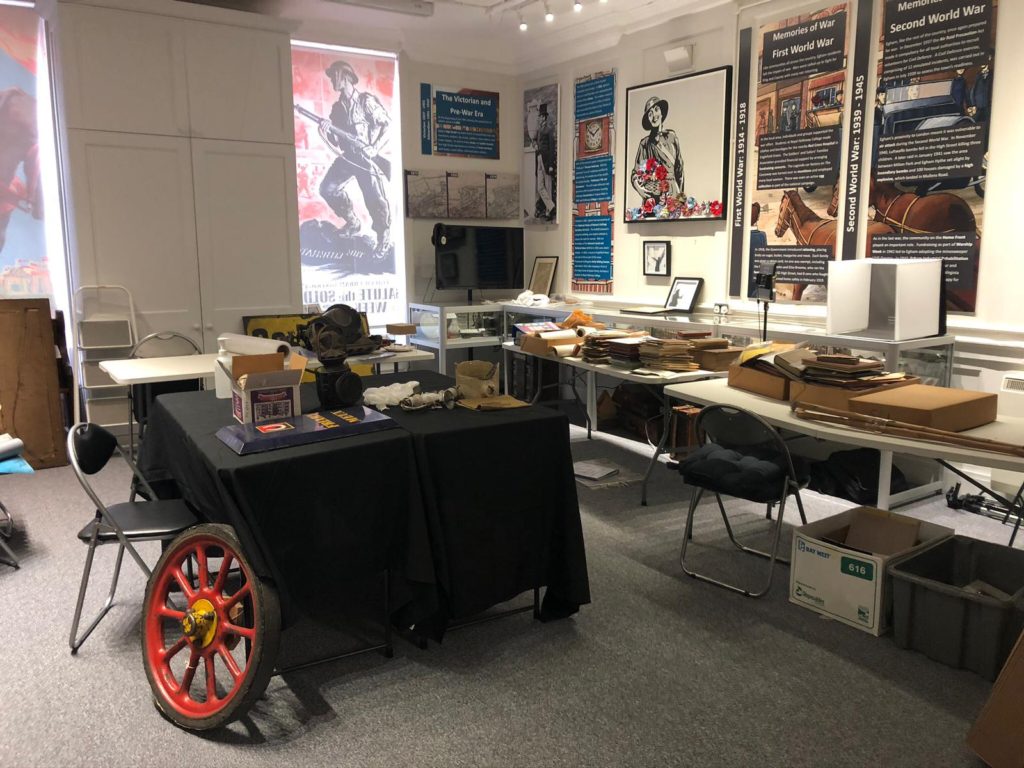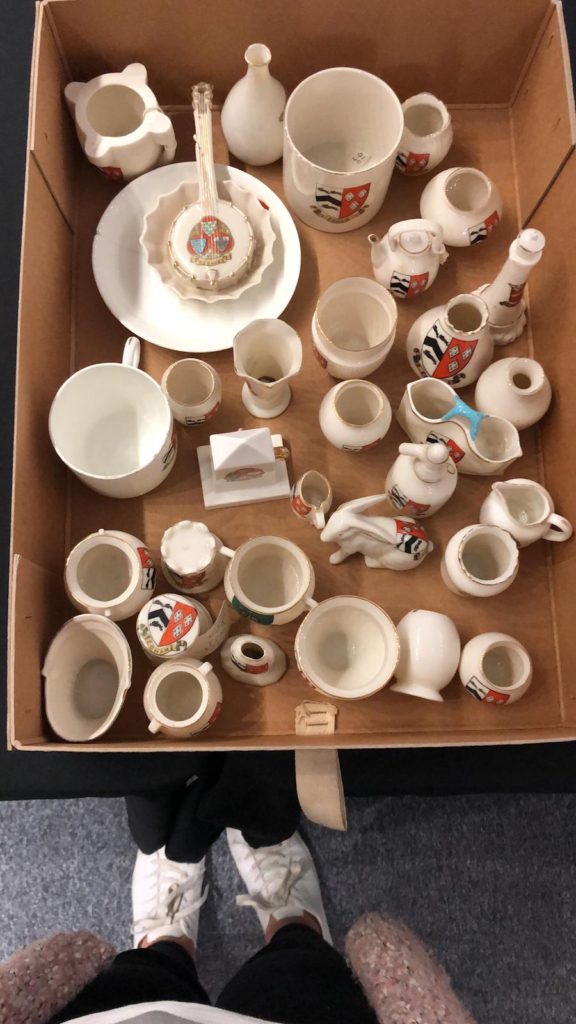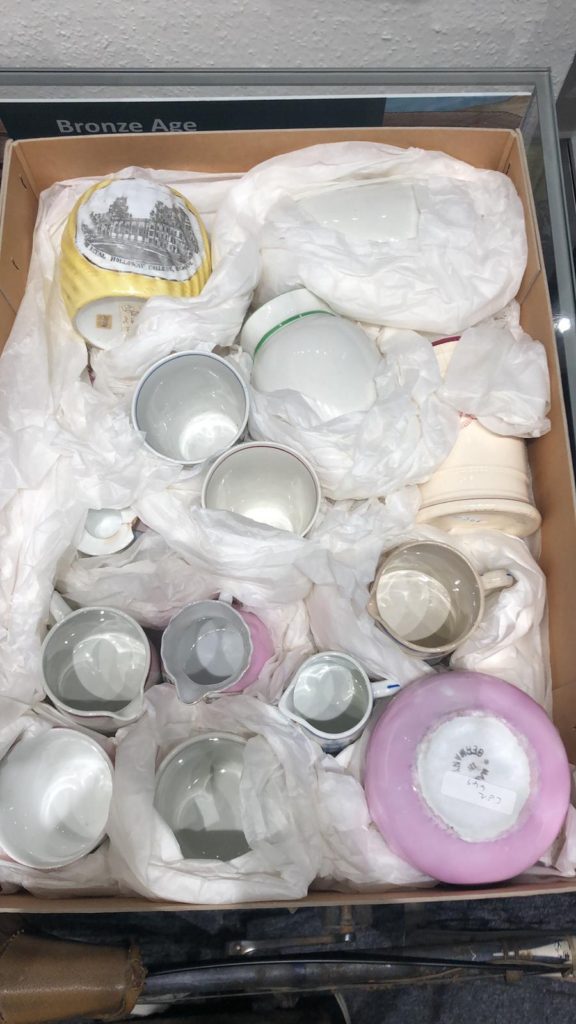Egham Museum embarks on a Collections Review and Rationalisation Project
The Egham Museum has been collecting items for over 50 years; our collection has grown substantially since we first opened our doors in 1969.
The collection comprises 370 pictures and prints, 5,270 documents, 4,980 photos, 1,400 slides, 1,270 maps, 450 ceramics, 190 costumes, 560 estate agency particulars, 980 manuscripts, 1,650 books and 1,250 miscellaneous objects in the collection. These circa 20,000 items make the Museum an invaluable source for researchers. All collection catalogue records are currently held on index cards, which are being transferred to an electronic searchable database.
In summer 2020, after much research and careful planning, we embarked on a Collections Review and Rationalisation project.
Background
The Egham Museum exists to preserve our proud heritage and hold items in trust for future generations. In order to fulfil our vision and mission, it is important to care for and document our collections to a high standard, making them accessible to as many people as possible. As such, the Egham Museum has been Accredited through the Arts Council England scheme since 2013 (and the various departmental bodies before this) meaning that our collection documentation systems meet very specific requirements in line with SPECTRUM, the UK collection management standard that is also used around the world.
The Need
Over time, our collection has grown and our storage space is becoming quite full. While our current documentation processes all meet Accreditation Standards, they are still manual card-based systems, meaning we may be over collecting in one theme as we cannot quickly check records, or we might be under-collecting in other areas.

The Egham Museum’s store room 
Our collection is catalogued manually on index cards
While our work is always completed to a high standard, it is sometimes hard to identify relevant items for research and display due to a lack of documentation and electronic cross-referencing, resulting in sometimes repetitive and time-consuming tasks. As a small team, time is often limited so more detailed records all held centrally and electronically would expedite this process, allowing us to produce more engaging experiences while maintaining the high standards. It would also enable a broader range of people to contribute to content production, therefore diversifying the types of stories we are able to tell, highlighting different perspectives.
It is important that, as a community organisation, the Egham Museum represents all aspects of the local community, irrespective of class, gender, sexuality, disability or race. One example of this was the ‘Suffrage in Egham’ project in 2018. Researchers were guided by the collection which resulted in an exhibition which represented the breadth of what the museum had on offer, but it also highlighted the lack of accessible information pertaining to the lives of Egham women, particularly working-class women living in Egham.
In order to fully understand the gaps in the collection, and prioritise future collecting, it is important to thoroughly review the existing collection to establish a baseline. From this we can also can identify areas of contemporary collecting we would like to pursue.
The Process
A Collections Review allows us to revisit our collection assessing the information and supporting documentation we hold about it, recording its condition, if there are any duplicates, how the item might be used within the Museum.
A criteria system covering the above four areas has been developed after sector research, review and analysis of other museum examples. The process involves scoring each item against the four areas to clearly identify its suitability within the Museum. Every item we care for comes with a cost, sometimes directly (in terms of storage boxes, conservation) and often indirectly (Curator time/cost, building utilities) so we have to make sure we can demonstrate the value it contributes the Museum’s vision.
We have piloted the process on nearly 700 items and have further refined and developed as part of an internal Collections Sub-Committee.

Some of the collection items we reviewed using the criteria 
We spread out into the Museum space while we reviewed the collection
The process has allowed us to better organise the store room by storing like-material with like-material, and improve the way items are packed and labelled in boxes. Some items have also been photographed to a high standard and have been shared on our social media channels.

Goss China was reviewed as part of the pilot 
The Goss was repacked into acid-free storage boxes padded with acid-free tissue
We have also revisited our physical collection area remit which is the locality covering the old Egham Urban District Council.

On occasion, items will have scored low on our criteria and are outside our collecting area remit. Where relevant, we can then relocate these items to other museums who are better placed to care for or showcase them. This is part of a ‘disposals’ process – it is important to note that in this situation, disposal does not mean in the bin! We do everything we can to ensure items either return to their donor or remain in the public sphere. As an Accredited Museum, we follow strict disposal procedures and an ethical disposal toolkit written by the Museum Association.
Your Stories
We know that even though there is a lot of knowledge about the collection held within the museum team, there are still many gaps in our understanding. We have been using the collection review as an opportunity to delve deeper into specific items and stories with the public, asking ‘What is this?’ on our Twitter and Facebook inviting people to contribute ideas.
We will continue this throughout 2021 and develop it into a small rotating temporary exhibition where visitors can view the items and contribute to our collective knowledge and understanding. More details about this will be shared soon and we look forward to developing our collection with you over the coming months.


